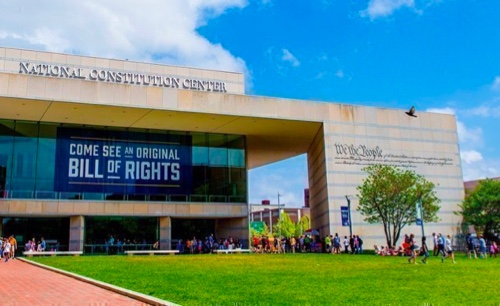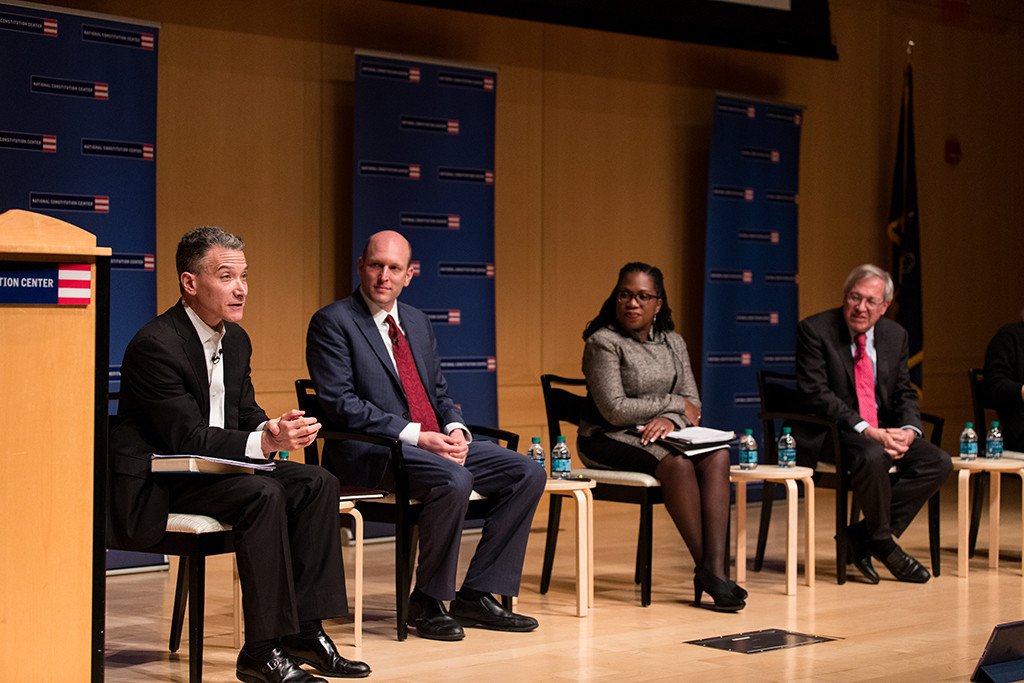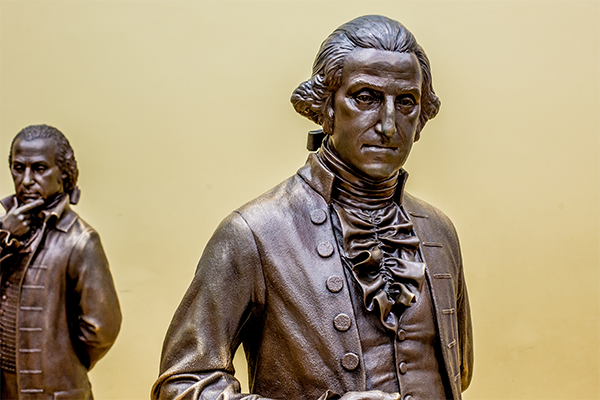Article II, Section 1 begins: “The executive power shall be vested in a President of the United States.” At a minimum, this Vesting Clause establishes a distinct executive office to be occupied by an individual. At the Founding, the creation of a separate executive was hardly obvious. The Articles of Confederation created no separate executive; duties that we associate with the executive were handled first by congressional committees and then by “Secretaries” or “Boards” under congressional direction. Nor was it self-evident that one individual would stand at the apex of the new federal executive. Several states had plural executives (executive committees) and the notion of a plural executive had its backers at the Philadelphia Convention. The Vesting Clause resolves that question in favor of a unitary executive.
The Vesting Clause also provides a textual confirmation – in conjunction with the vesting clauses in Article I and III -- of the implicit background principle of the separation of powers. Separation of powers principles have underpinned important Supreme Court decisions on presidential privileges and immunities. An example is United States v. Nixon (1974), which concluded that separation of powers principles provide some protection for presidential communications from the courts. Nonetheless, the Court concluded that the context of a criminal investigation was different and that Nixon would have to hand over relevant evidence in his possession. Another example of implicit constitutional safeguards is Trump v. United States (2024). By a 6-3 decision, the Court found that the President enjoyed, for his official acts, at least presumptive criminal law immunity and, in some instances, absolute immunity for actions within the outer perimeter of his official responsibilities. To this day, the existence, contours, and extent of executive privileges and immunities remain contested.
The disagreement between the majority and the dissent in Trump v. United States is a good illustration of a longstanding disagreement between more robust views of presidential power and more modest ones. This broad disagreement surfaces in numerous contexts, many of which reach beyond the Vesting Clause. See, e.g. Zivotofsky v. Kerry (2015) in which the Court divided on the question whether the President had exclusive authority to decide whether to recognize Jerusalem as a part of Israel by virtue of the President’s power to receive Ambassadors Art. II, §3, cl.3. Interestingly, some Justices who rejected exclusive presidential power in Zivotofsky favored presidential immunity in Trump, and some Justices who favored exclusive presidential power in Zivotofsky dissented in Trump.
Relatedly, there are longstanding disputes concerning the President’s supervision and control of the executive branch. Can the President direct an official to exercise her powers in a specific way? Can the President execute that official’s powers directly, substituting himself as the actor? Can Congress insulate certain officials from being removed (fired) by the President by requiring “cause” — most often phrased as inefficiency, neglect of duty, or malfeasance in office? Can Congress create offices whose occupants can render final decisions without the supervision and review of the President or some principal officer whom the President appoints and can remove at will? Can Congress create civil service tenure protections for lower-level officers or employees?
Some believe that the Article II Vesting Clause gives the President nearly complete control over the actions of the executive branch and over the officials who undertake those actions. The core argument is that the Constitution vests all of the executive power in the President and that all subordinate officials necessarily derive their power to act from the President’s power. To ensure that these officials faithfully execute the President’s power, the President has the power to supervise and control each of them without the interference of Congress. This theory is entitled the “Unitary Executive.” But this label is a bit misleading, for we would do well to remember that the idea that the Constitution establishes a unitary executive in the sense identified above is universally shared.
Others believe that Article II does not establish a completely hierarchical executive under the President’s control. Many further insist on the importance of the Necessary and Proper Clause, which vests in Congress the power “[t]o make all Laws which shall be necessary and proper for carrying into execution … all other powers vested by this Constitution in the Government of the United States, or in any Departments or Officer thereof.” Art. I, § 8, cl.18. The basic argument is that this Clause gives Congress considerable authority to structure the bureaucracy as it sees fit. Even so, Congress must not impede the President’s ability to discharge his constitutional duties or interfere with powers that rest conclusively and exclusively with the President, such as the pardon power.
These disagreements, and the underlying questions they raise, matter. In their purest forms, the two understandings of the Vesting Clause—the Unitary Executive and the versions that see a less hierarchical executive—imagine quite different allocations of power and institutional arrangements. The modern administrative state has long relied upon the less hierarchical vision of the executive. Via dozens of statutes, Congress has established numerous independent agencies, ranging from the Federal Communications Commission to the Federal Reserve. Furthermore, Congress has provided removal protections to multiple officers, granted considerable authority to administrative law judges, and established the civil service system to safeguard employees.
On the one hand, if the theory of the Unitary Executive is correct, many aspects of the administrative state are unconstitutional. Take the for-cause removal protections enjoyed by the governing boards of independent agencies. These restrictions would be unconstitutional because they inhibit the President’s ability to supervise and control. On the other hand, if the less hierarchical view is the better reading of the Vesting Clause, what prevents Congress from granting removal protections to the Secretary of State or the Attorney General? Under this view, Congress might radically refashion the President’s relationship to departments long thought of as executive and under his supervision.
Judicial doctrine on these questions was long stable, but is now in flux. In a case involving presidential dismissal of a postmaster, Myers v. United States (1926), the Court claimed that the Vesting Clause granted the President the power to execute the law and to remove executive officials. Yet in later cases, the Court approved congressional authority to impose for-cause removal restrictions for some public officials. In a case involving the Federal Trade Commission, Humphrey’s Executor v. United States (1935), the Court held that Congress could limit the President’s ability to remove a commissioner. Similarly, in Morrison v. Olson (1988), the Court sustained a law that said the executive could remove independent prosecutors for just cause only. The Court held that for-cause removal gave the President sufficient authority to ensure faithful execution. Further, the Court sometimes avoids resolving questions about the meaning of the Vesting Clause, choosing to rest its decisions on other grounds.
In the most recent removal cases, the Court has adopted a Unitary Executive approach. In Seila Law v. Consumer Financial Protection Bureau (2020), the Court held that the for-cause removal protection of the Director of the CFPB was unconstitutional, narrowing the reach of Humphrey’s Executor to multi-member boards. The following year, the Court reached the same conclusion in a case involving the single head of the Federal Housing Finance Agency. See Collins v. Yellen (2021). In 2025, the Supreme Court, over a series of rulings, has effectively permitted the President to fire many officers with for-cause protections, perhaps suggesting that it will limit or overrule Humphrey’s Executor.
Together, these recent decisions have altered the legal landscape that for decades was more hospitable to significant aspects of the administrative state.






